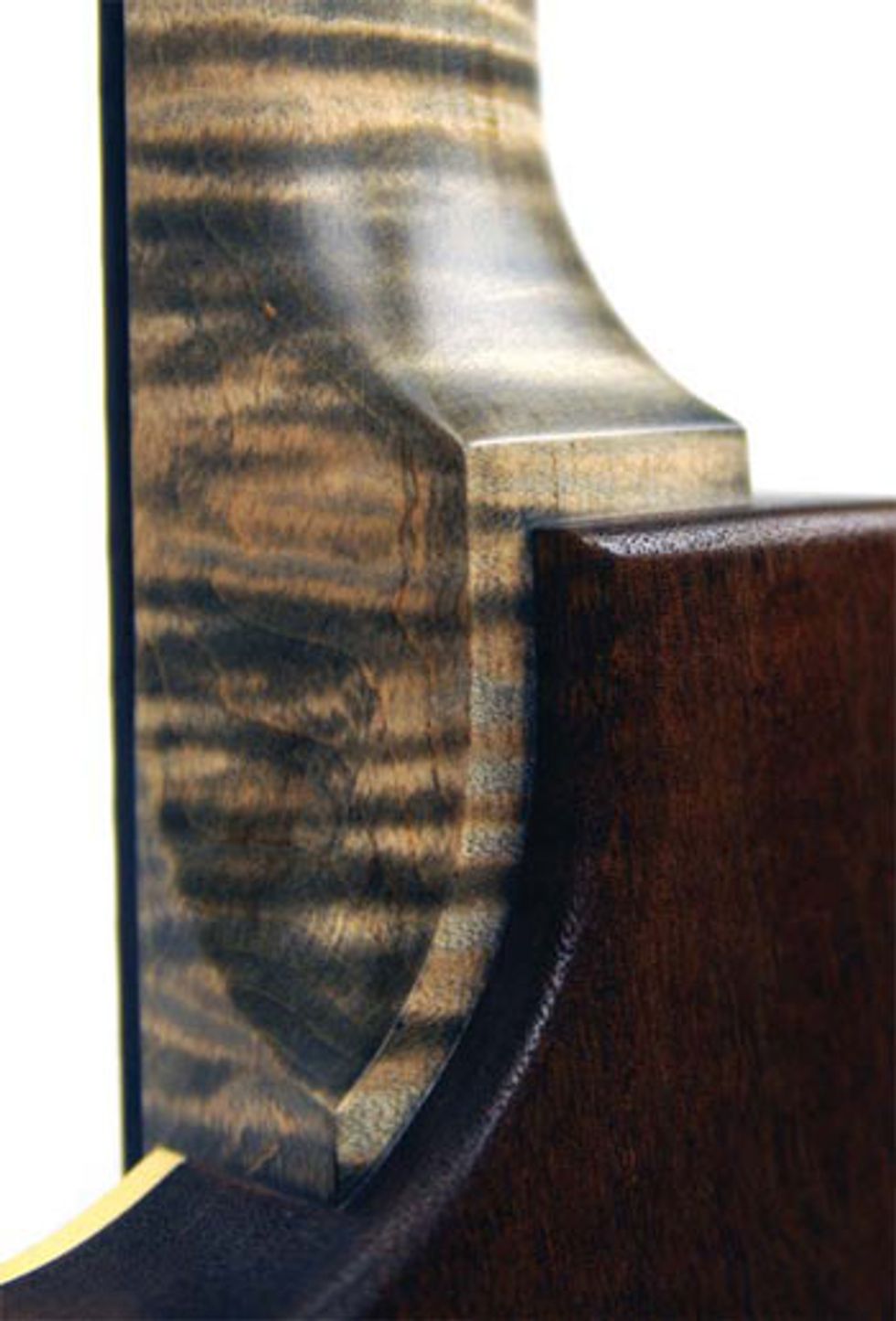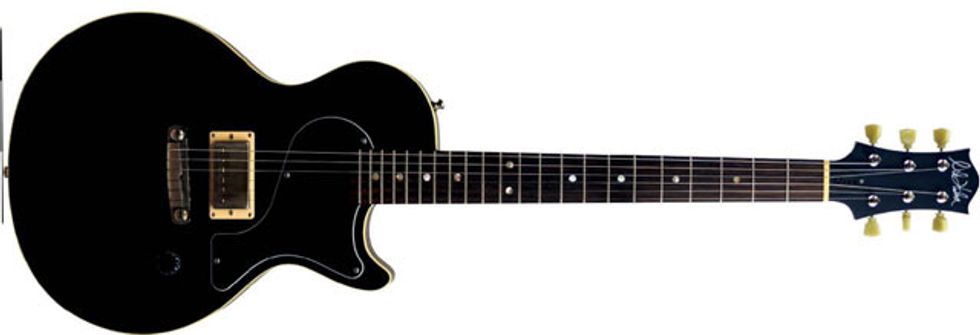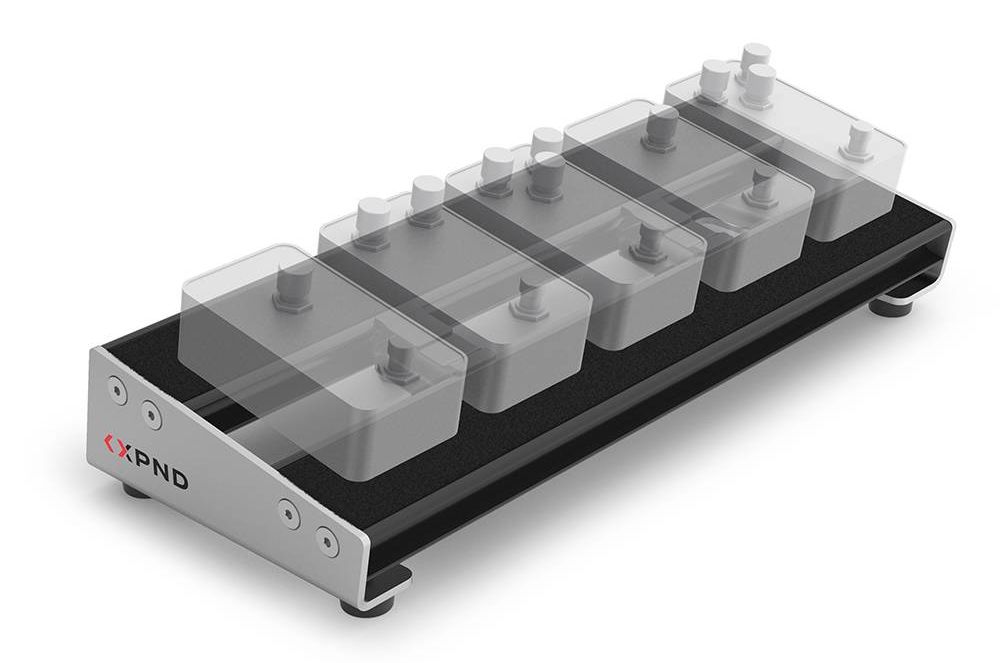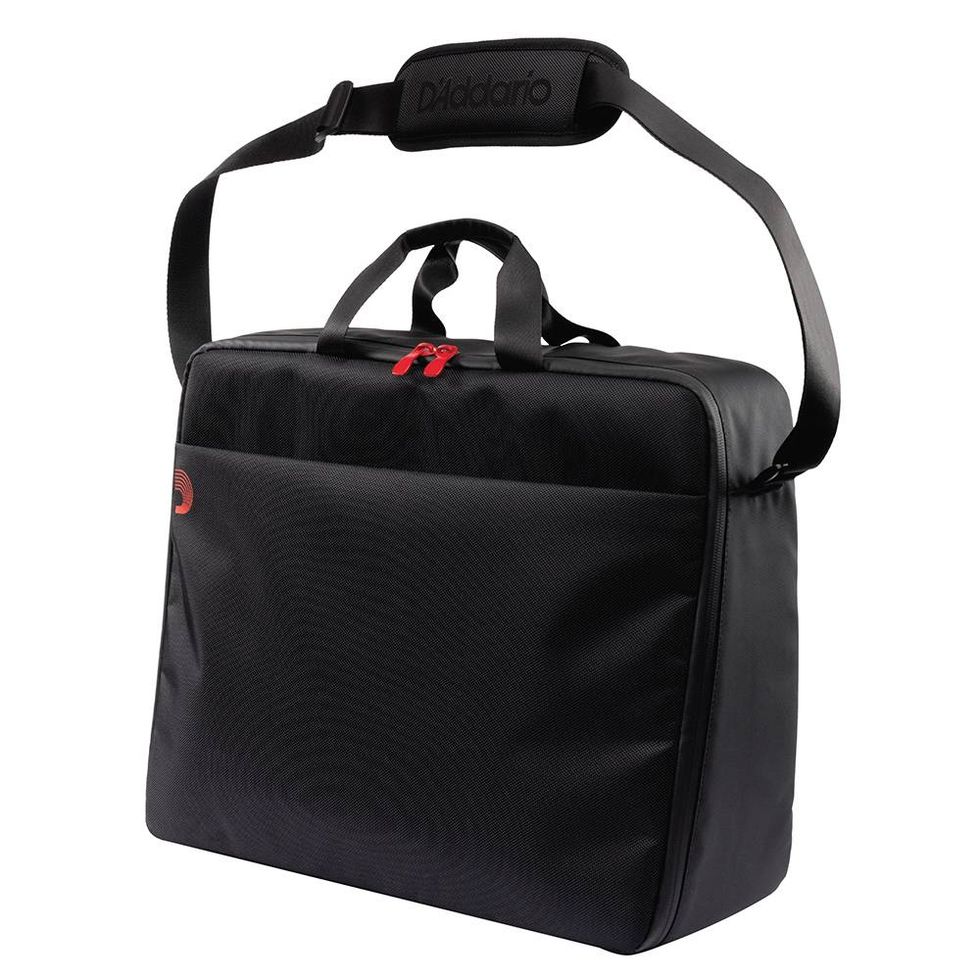Pop quiz: Germany’s Nik Huber is ________.
A. A luthier known among boutique guitar enthusiasts for his opulent tops and lavish appointments and inlay work
B. A heckuva guitar player and a heckuva nice guy
C. A luthier who builds no-nonsense guitars for serious players
D. All of the above
 The answer, of course, is D (I didn’t say it was a trick pop quiz). The fact that Huber is a player probably has a lot to do with the fact that all the guitars he and his team make are serious business, whether they’re lavish instruments or not. That’s not to say that those who don’t play guitar can’t make a great guitar—there’s plenty of evidence to shoot down that claim—but simply that Huber and his crew must know firsthand that if the guitar doesn’t deliver the good stuff during a performance, it’s bound to end up neglected no matter how good it looks. And that’s likely the reason why so many Huber fans have welcomed without hesitation his more recent venture into models that embody a no-frills, minimalist aesthetic. Even though he’s turned some of his attention (but not all of it) away from those gorgeous tops and toward more bare-bones rockers— like his classic take on the Junior and Special or his Huberian twist on the Tele with the Twangmeister—they know Nik Huber guitars will still manifest the same uncommon quality that came with the Dolphin and Orca guitars. Now make way for the Krautster.
The answer, of course, is D (I didn’t say it was a trick pop quiz). The fact that Huber is a player probably has a lot to do with the fact that all the guitars he and his team make are serious business, whether they’re lavish instruments or not. That’s not to say that those who don’t play guitar can’t make a great guitar—there’s plenty of evidence to shoot down that claim—but simply that Huber and his crew must know firsthand that if the guitar doesn’t deliver the good stuff during a performance, it’s bound to end up neglected no matter how good it looks. And that’s likely the reason why so many Huber fans have welcomed without hesitation his more recent venture into models that embody a no-frills, minimalist aesthetic. Even though he’s turned some of his attention (but not all of it) away from those gorgeous tops and toward more bare-bones rockers— like his classic take on the Junior and Special or his Huberian twist on the Tele with the Twangmeister—they know Nik Huber guitars will still manifest the same uncommon quality that came with the Dolphin and Orca guitars. Now make way for the Krautster.Ich Bin Krautster
It’s simplest to say that Huber’s intention to disguise the Krautster as a purely plain and practical guitar hasn’t entirely succeeded, because despite the humble, stripped-down look the guitar portrays to an audience, it still betrays enough conspicuous craftsmanship to treat the eyes, hands and ears of the player who straps it on. The overall look is an understated cool, with its worn, satin-black finish and tastefully cut three-ply pickguard. The single Custom Humbucker, made by Häussel, is housed in an aged nickel cover to match the look of the aged Nik Huber aluminum stoptail bridge. The only other feature on the face of the guitar is the single black bell Volume knob. The Krautster is not exactly “adorned” the way some of Huber’s guitars are. Look a little closer, though, and thoughtful details appear. The cream binding matches the cream pickup mounting ring and the expertly cut bone nut, the dot inlays are abalone, and the fretwork appears to be perfect.
 Each piece of wood that makes up the guitar is beautiful. The Indian rosewood fretboard is richly hued and the mahogany body slab has a subtle figuring that’s brought out by the open-pore finish. The curly maple neck is simply stunning—like nothing we’ve seen—and is oh-so comfortable despite its thickness (.88" at the first fret and .96" at the 12th) because of its smooth satin finish and low shoulders, almost like the softest V you can imagine. Because of Nik Huber’s sculpted heel joint—an understated but elegant design in itself—access to the upper frets is much easier than I anticipated in a body style of this type.
Each piece of wood that makes up the guitar is beautiful. The Indian rosewood fretboard is richly hued and the mahogany body slab has a subtle figuring that’s brought out by the open-pore finish. The curly maple neck is simply stunning—like nothing we’ve seen—and is oh-so comfortable despite its thickness (.88" at the first fret and .96" at the 12th) because of its smooth satin finish and low shoulders, almost like the softest V you can imagine. Because of Nik Huber’s sculpted heel joint—an understated but elegant design in itself—access to the upper frets is much easier than I anticipated in a body style of this type.How Do you Say “Gadzooks!” auf Deutsch?
When the Krautster arrived at our doorstep, the cold of winter was still upon us, so we let it acclimate before opening the shipping container. It was a difficult wait. When it came out of the case, the Krautster was expertly set up and still in tune, so we decided to skip ahead of the ordinary review preliminaries and plug it straight into an Orange Tiny Terror combo. Dialing the Gain down and diming the Volume with the Tone at around noon, the Krautster delivered a great kerrang! with its first big, open chord. The single humbucker is pretty hot, and the first tone it produced with the Volume rolled all the way was too bright. After lowering the pickup by just a few turns of the adjustment screws, we returned to the amp and were rewarded with pure, ballsy rock ’n’ roll crunch—tight and defined but with great string detail. In the absence of a Tone control, we found the best balance of frequencies came with the Volume knob rolled off just slightly from maximum. We were fairly certain, at that point, that we could detect the Krautster sneering at the other guitars in the room.
Moving back to preliminary steps like playing the guitar unplugged for a long while did not prove disappointing. In fact, the guitar surprised us with the quality of its unamplified voice. Each string rings out pure and clear, and with a detectable zing that exposes the level of its construction. Other welcome features for this reviewer are the compound radius fretboard (10" to 14"), which makes less work out of different kinds of playing, and the 25" scale length, which keeps the strings from giving as much as with the other humbucker-equipped, set-neck single-cut guitars I’m used to. Testing it with other amps revealed it to be a guitar that’s all about just what Huber claims: “the essence of rock.” It’s best clean tones are most easily achieved by dialing the amp’s gain and volume high and riding the guitar’s Volume on its lowest settings. Raising the volume a touch to add some dirt produces a full-bodied, low-gain crunch that sets a standard. The Häussel Custom Humbucker is extremely sensitive to touch and playing dynamics—though it should be noted that it tends more toward a modern rock sound than a vintage one. With the volume full up (or nearly so), and plenty of gain on the amp, the Krautster simply shines.
That’s enough of a recommendation right there, but the Krautster has one more trick up its sleeve. Pulling up on the Volume knob splits the humbucker into a single-coil—the same heat and the same sensitivity, but leaner and meaner, with great bite. Set for single-coil operation and running through the Top Boost channel of an AC30 with a decent amount of gain, the guitar was at once both delicate and fierce, capable of scorching, single-note leads but still yielding a ring and shimmer with lighter strumming or fingerpicked chords. Coil splitting is a common enough feature these days, but few guitars display such different personalities on the basis of that feature alone.
The Final Mojo
When all is said and done, Nik Huber’s Krautster is clearly a rockmobile, but it’s not as “plain Jane” as it might appear. It has more than its fair share of grace. It’s a thrill to play and to hear, and there is no doubt it was made to be put to regular use. The double-action truss rod received only one minor adjustment as the warmer weather began to take hold, so it’s also apparent the guitar holds a setup quite well. If I had to point to one reservation, I would say I lament the lack of a Tone control— but that’s only because I suspect there’s a remarkable woman tone lurking in that Häussel pickup, and it’s housed in a guitar that would showcase that kind of tone perfectly, both visually and aurally. Nik Huber truly is one heckuva nice guy, though, so I’m willing to bet he’d put one in if you really wanted him to.
Buy if...
you want one of the most finely crafted rockers available.
Skip if...
you need a ten top or lots of pickups and knobs.
Rating...
Street $2680 - Nik Huber - nikhuber-guitars.com |




















![Rig Rundown: Russian Circles’ Mike Sullivan [2025]](https://www.premierguitar.com/media-library/youtube.jpg?id=62303631&width=1245&height=700&quality=70&coordinates=0%2C0%2C0%2C0)






